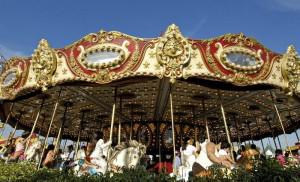How Safe is the Playground Sandbox?
 Recently, microbiologists from National Safety Foundation International (NSF) swabbed 26 different public places testing for the highest level of general bacteria to determine how safe these areas are for public use.
Recently, microbiologists from National Safety Foundation International (NSF) swabbed 26 different public places testing for the highest level of general bacteria to determine how safe these areas are for public use.
NSF’s team of microbiologists found that the location that harbored the highest level of bacteria and is the least safe place is a playground sandbox.
Sandboxes are actually an ideal setting for bacteria. Not only are they exposed to wildlife, such as cats and raccoons, but they can also hold on to the bacteria that is left from human contact, such as saliva, food items, and other bacteria from human hands.
Before you consider allowing your child to play in a public sandbox, you need to know that the sandbox is to be raked and sifter daily to remove debris. The sandbox also needs to be covered at night to prevent animals using it as a littler box.
NSF International is an independent, not-for-profit organization. Since 1944, NSF’s main commitment continues to be making the world a safe place for consumers. To explore the NSF consumer website to learn more about NSF, its programs and services, go to www.nsf.org
How Safe Are Amusement Park Rides?
 Government statistics demonstrated that fixed-site amusement rides constitute a safe, if not one of the safest forms of recreation available to the public. These statistics do not apply to portable rides that are set up in a community for a limited period of time.
Government statistics demonstrated that fixed-site amusement rides constitute a safe, if not one of the safest forms of recreation available to the public. These statistics do not apply to portable rides that are set up in a community for a limited period of time.

On its website, The International Association of Amusement Parks and Attractions (IAAPA) reports that their association worked together with the National Safety Council (NSC) to establish a nationwide amusement ride injury reporting system for all facilities operating fixed-site amusement rides in the United States. This system analyzes data from a statistically-valid sample to produce an annual amusement ride injury estimate for the overall fixed-site amusement ride sector in the U.S. Participation in this survey is mandatory for all IAAPA members operating fixed-site amusement rides in the U.S.
According to IAAPA, in 2009, approximately 280 million guests visited U.S. amusement facilities and safely enjoyed 1.7 billion rides. The most recent survey highlights that an estimated 1,086 ride related injuries occurred in 2009. Only 65 of the injuries in 2009 were reported as “serious,” meaning they required some form of overnight treatment at a hospital; this comprised roughly 6 percent of all ride injuries.
Information on the IAAPA site, from both government and independent data supports the fact that the number of patrons who experienced an incident while on a ride was miniscule – essentially one one-thousandth of one percent, or 0.00001.
Outside analysis of the NSC reporting data also found that the injury risk of fixed-site amusement rides (estimated at eight per million visitors) compares very favorably with those of other common recreational and sporting activities. Using participation figures from the National Sporting Goods Association (NSGA) and injury estimates from the CPSC database, fixed amusement ride injury risk was determined to be 10 to 100 times lower than for most common recreational and sporting activities including roller skating, basketball, football, soccer, fishing, and golf.
Examination of public documents and other relevant data consistently shows that only a small percentage of those mishaps that do occur are caused by factors subject to either ride operations, staff or mechanical error.
For more information, visit:

